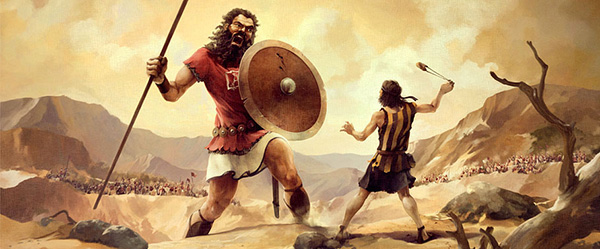As I near the end of this 31 Longreads in 31 Days challenge, I’d be remiss if I didn’t focus on at least one story by one of my favorite nonfiction writers, Malcolm Gladwell. I dissected his story on dogfighting a few years ago on this blog. Another impressive Gladwell story is How David Beats Goliath in the May 11, 2009 issue of The New Yorker.

Gladwell often explores a big idea or concept and weaving it together with various strands of narrative. In this story, he works with a basic argument, that underdogs often have a better chance than you would expect vs. favorites, as long as they are willing to apply unconventional tactics. Effort, not ability, Gladwell argues, is often the key to victory, the equalizer that allows small armies to defeat bigger ones, that lets smaller basketball squads overcome taller, better-shooting squads. To support and explore his idea, he looks at the biblical story of David vs. Goliath, D.E. Lawrence’s attack on the town of Aqaba in 1917, and the unexpected dominance of a girls youth basketball squad in modern day Northern California. Each of these intriguing stories come together to underscore his over-arching point:
When they finally arrived at Aqaba, Lawrence’s band of several hundred warriors killed or captured twelve hundred Turks, and lost only two men. The Turks simply did not think that their opponent would be mad enough to come at them from the desert. This was Lawrence’s great insight. David can beat Goliath by substituting effort for ability—and substituting effort for ability turns out to be a winning formula for underdogs in all walks of life, including little blond-haired girls on the basketball court…
Lawrence attacked the Turks where they were weak—the railroad—and not where they were strong, Medina. Redwood City attacked the inbounds pass, the point in a game where a great team is as vulnerable as a weak one. Lawrence extended the battlefield over as large an area as possible. So did the girls of Redwood City. They defended all ninety-four feet. The full-court press is legs, not arms. It supplants ability with effort. It is basketball for those “quite unused to formal warfare, whose assets were movement, endurance, individual intelligence . . . courage.”
What’s great about Gladwell’s work is that he explores ideas and arguments with stories and people. In this piece, he examines the advantages and disadvantages of underdog strategies with not only the three stories mentioned above, but also the example of a 1971 Fordham vs. University Massachusetts NCAA basketball game, the coaching approach of Rick Pitino at Kentucky and Louisville, and the tactics used by a computer programmer to dominate a war gaming simulation tournament in the 1980s. In this story, like so many of his pieces, he uses narrative to set up the arguments he wants to convey to the reader. He ties these examples together gracefully, highlighting common themes and ideas that keep resurfacing.
Here, he shows how David uses the same strategy against Goliath that Fordham University used against highly favored University of Massachusetts thousands of years later:
“And it happened as the Philistine arose and was drawing near David that David hastened and ran out from the lines toward the Philistine,” the Bible says. “And he reached his hand into the pouch and took from there a stone and slung it and struck the Philistine in his forehead.” The second sentence—the slingshot part—is what made David famous. But the first sentence matters just as much. David broke the rhythm of the encounter. He speeded it up. “The sudden astonishment when David sprints forward must have frozen Goliath, making him a better target,” the poet and critic Robert Pinsky writes in “The Life of David.” Pinsky calls David a “point guard ready to flick the basketball here or there.” David pressed. That’s what Davids do when they want to beat Goliaths.
It’s a fine read. Gladwell bookends the article with the unlikely story of the Redwood City girls basketball squad. He starts and ends there, after exploring the historical, philosophical, moral, and physical elements of insurgents and underdogs over the course of human history. Few writers could tackle a topic like this from multiple levels and angles; Gladwell does it in an entertaining, though-provoking way.